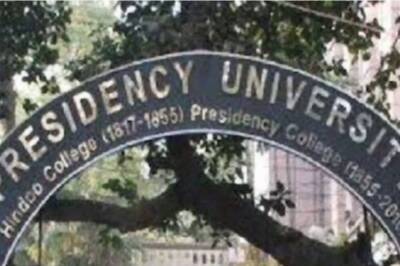
views
The Railway Ministry on Sunday has dismissed the role of ‘Kavach’, the anti-collision system, in the recent train tragedy that resulted in the unfortunate deaths of over 275 people, stating that the implementation of the technology on the affected route would not have averted the crash.
On Friday at approximately 7 PM, a collision involving the Bengaluru-Howrah Superfast Express, the Shalimar-Chennai Central Coromandel Express and a goods train took place near the Bahanaga Bazar station in Balasore, located approximately 250 km south of Kolkata and 170 km north of Bhubaneswar.
The clarification comes after Congress and TMC supremo Mamata Banerjee attacked the Centre over its implementation of the much-hyped Kavach system nationwide, claiming that the accident could have been averted if the technology was operational on the particular stretch.
Member of Operation and Business Development, Railway Board, Jaya Varma Sinha said, “In this situation, even if ‘Kavach’ would have been present, it would not have worked as the distance was just 100 metres and ‘Kavach’ needs at least 60 metres to react. Also, it would not work on the main line.” “No technology in the world can avert some accidents,” she added.
The statement follows Union Railway Minister Ashwini Vaishnaw’s in which he said that train crash had nothing to do with the Kavach system. “We have mobilised all resources. I also want to say that Kavach has nothing to do with the accident. This accident occurred due to changes to the electronic interlocking system,” he said, adding the statement made by the West Bengal chief minister “are not true.”
Explaining the sequence of the incident that took place on Friday night, Railway Ministry officials said the way the interlocking system operated appeared to be initially associated with the issue that caused the accident.
The problem pertains to the electric point machine, a crucial device for railway signalling, and electronic interlocking, he said, adding, “The setting of the point machine was changed. How and why it was done will be revealed in the probe report.”
The electric point machine is a critical component of railway signalling that enables swift operation and secure locking of point switches. It plays a significant role in ensuring the safe movement of trains. Any malfunction or failure of these machines can have a severe impact on train operations, compromising safety.
What is Kavach?
Kavach, an Automatic Train Protection and Warning (ATP) system, has been developed indigenously by the Railway Ministry’s Research Designs and Standards Organisation in collaboration with Indian vendors. Aligned with the government’s AatmaNirbhar Bharat vision, Kavach is currently undergoing commissioning for deployment along more than 1,200 km of the South Central Railway, as well as the Delhi-Mumbai and Delhi-Howrah lines, with completion expected by March 2024.
Functioning as a protective “armour,” Kavach is designed to automatically bring a train to a halt when it detects another train on the same track within a specified distance. Additionally, trains equipped with Kavach are programmed to stop automatically if the digital system detects any manual errors, such as disregarding a red signal or encountering other malfunctions. This system aims to prevent incidents like Signal Passed at Danger (SPAD), where a train passes a stop-signal when it should not.
Opposition’s Criticism
The Oppsosition parties have criticised the government over its implementation of its ‘Kavach’ anti-collision system and have raised questions on when will the Prime Minister Narendra Modi led-government implement the much-hyped system nationwide, after testing.
Senior serving and retired railway officials told News18 that the rollout of Kavach is slow, however the system built in on the newly introduced Vande Bharat trains. “Rollout of KAVACH is very slow, and we are yet to cover even a miniscule percentage under existing trains. The new trains, including Vande Bharat, have the system built in though,” a senior railway official said.
The Coromandel Express did not have the collision device installed in it, officials said. The high-level safety report said in its present form, the anti-collision device (ACD) was not a safety system and not yet fully engineered for ATP equivalence in standalone form.
“…But off-the-track loco position sensing through GPS as used in ACD, is a diverse technique and, therefore, is a promising concept… Automatic train protection systems are necessary to prevent collisions due to drivers passing signals at danger (SPAD),” the report stated.
The West Bengal chief minister on Saturday said the triple train accident was the biggest of the century and a proper investigation was needed to unravel the truth.
At a press conference in Delhi, the Congress demanded the resignation of Vaishnaw, alleging that his “PR gimmicks” overshadowed the “serious deficiencies, criminal negligence and complete disregard for safety and security” of Indian Railways.
The Opposition party also said that Prime Minister Modi should accept part of the responsibility of the “mess” which his government has inflicted on the Indian Railways and the people.
Congress MP Shaktisinh Gohil and AICC’s publicity and media department head Pawan Khera alleged that the Odisha rail tragedy was a “man-made devastation caused by “utter negligence, serious lapses in the system, incompetence, and a narcissistic sense of know-it-all attitude of the Modi government”.
Signaling Issue
“Green signal means that in every way the driver knows that his path ahead is clear and he can go forward with his permitted maximum speed. The permitted speed at this section was 130 kmph and he was running his train at 128 kmph which we have confirmed from loco logs,” she said.
“In both the trains, there was no question of over-speeding. Preliminary finding has found that there is a signalling issue,” Sinha said.
“Only one train was involved in the accident, it was the Coromandel Express. The Coromandel Express crashed with the goods train and its coaches went on top of the goods train. It was an iron ore-laden train, a heavy train, therefore the entire impact of the collision was on the train,” she said.
(With inputs from agencies)




















Comments
0 comment